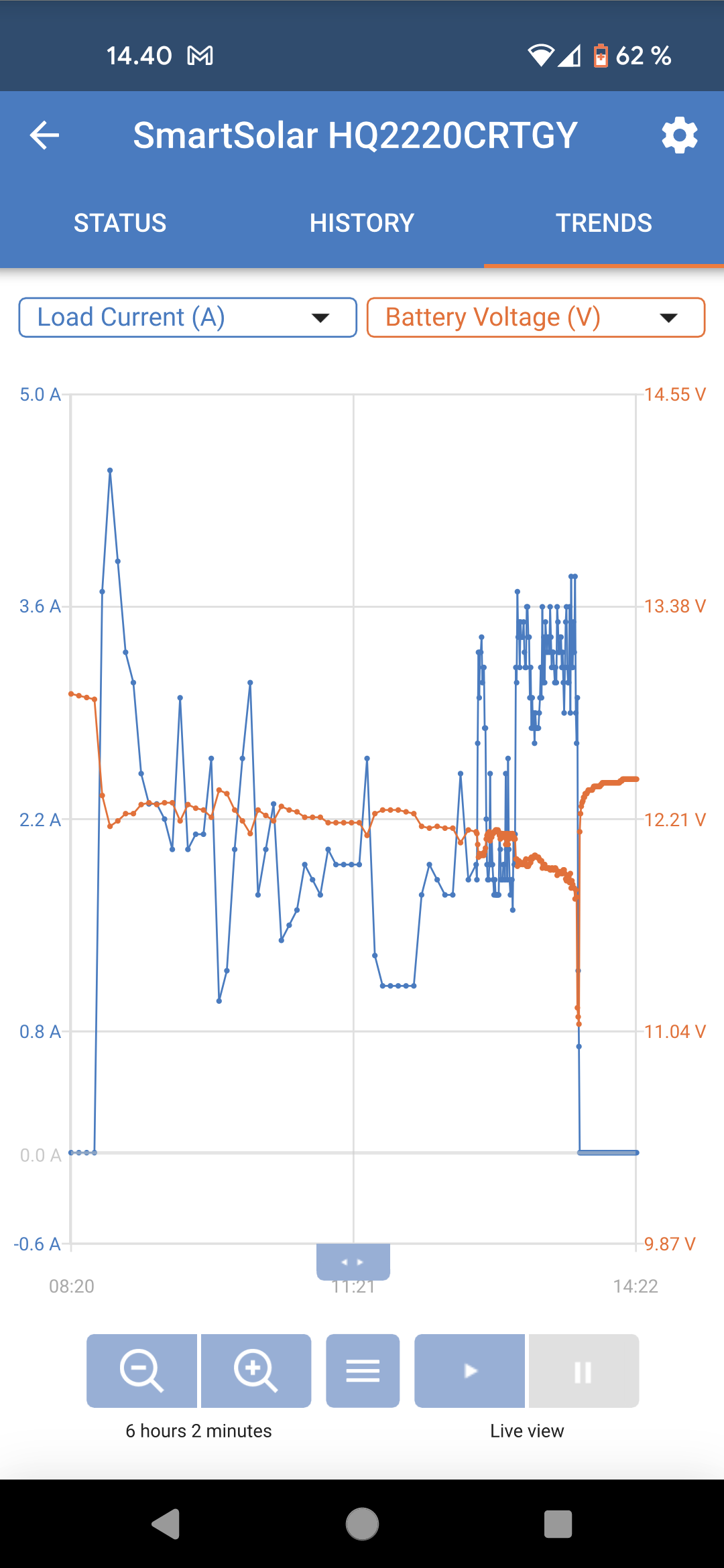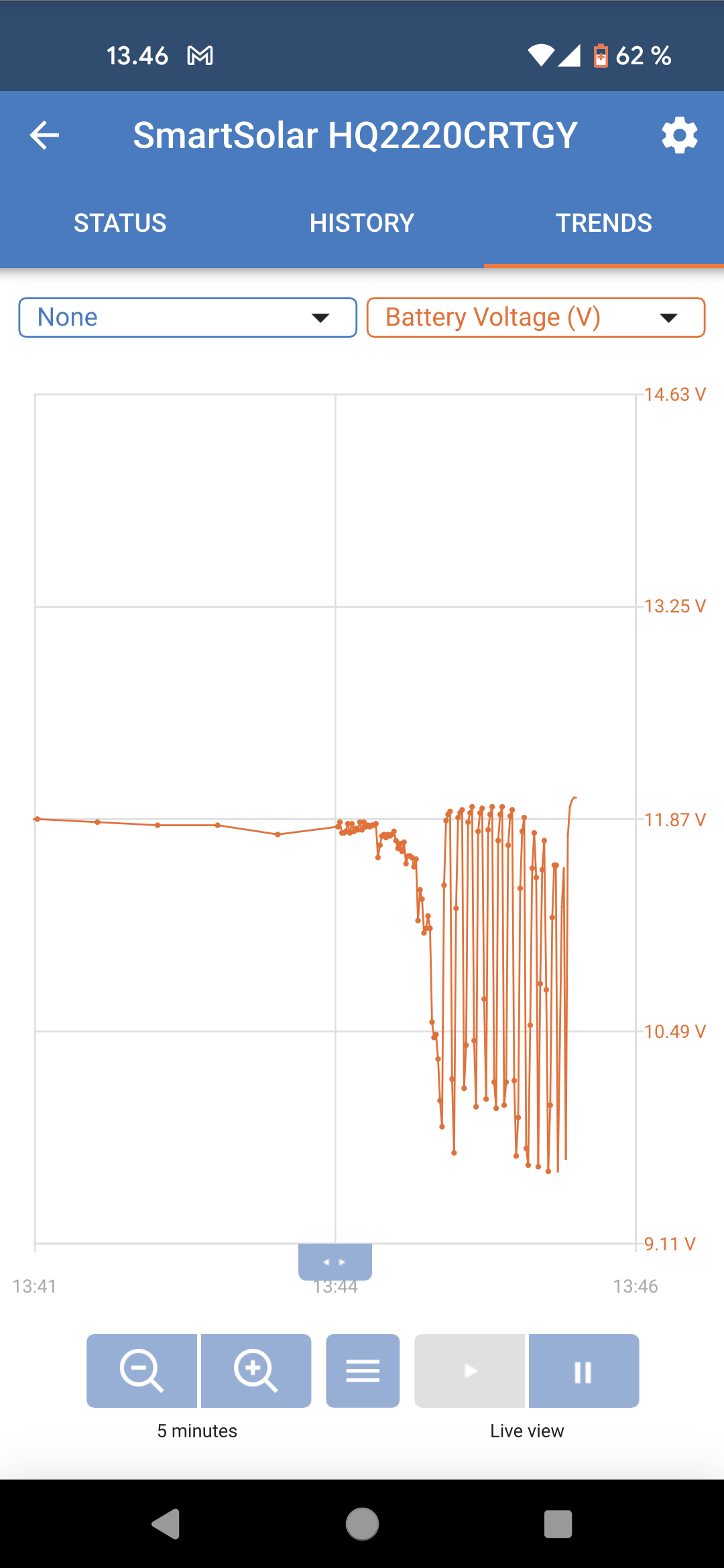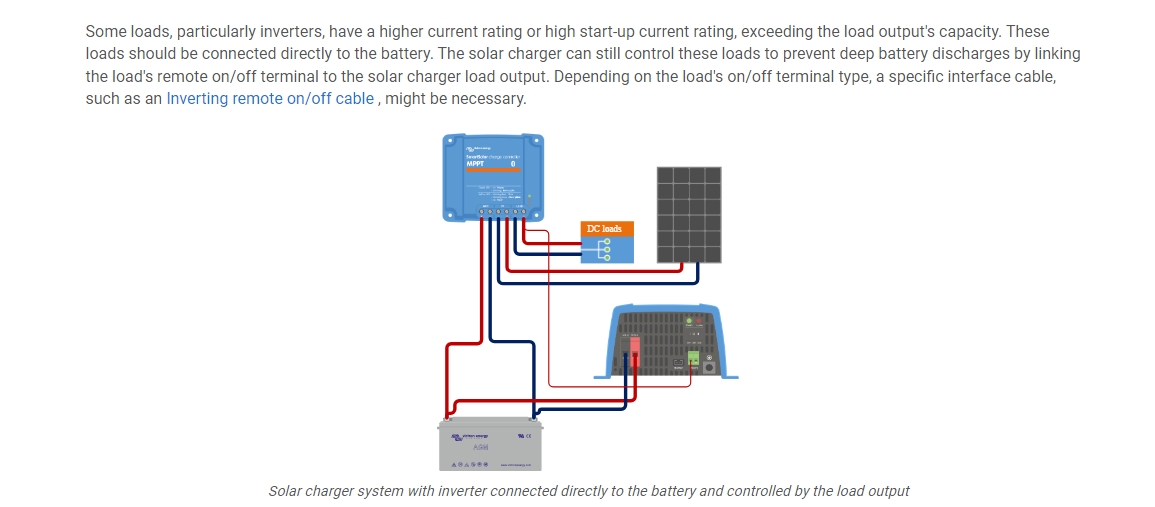So have been using a small phoenix inverter run off a MPPT100/20 to power a laptop. Re-charging has been done with conventional car charger as no solar panel as yet.
Normal use discharge as shown except for the dip at the end:

Normally the inverter or charger trips and I switch off. After a couple of hours the battery voltage is somewhere 12.3 - 12.5V so I think the State of Charge is ok before being charged again. However this time the on / off cycled like so:

... and even after a full charge the battery is a 10V battery so dead.
The jumper was set on the middle pins of the controller so should operate:
Conventional algorithm:
low voltage disconnect: 11.8V
Automatic load reconnect voltage: 14.0V
However that doesn't appear to be as it's behaving as it's re-connecting at 11.9V or so.
Any ideas what has happened?
Now I will run the load as BatteryLife with the jumper removed to see if that behaves better but it's an expensive experiment if I'm doing something else wrong...

